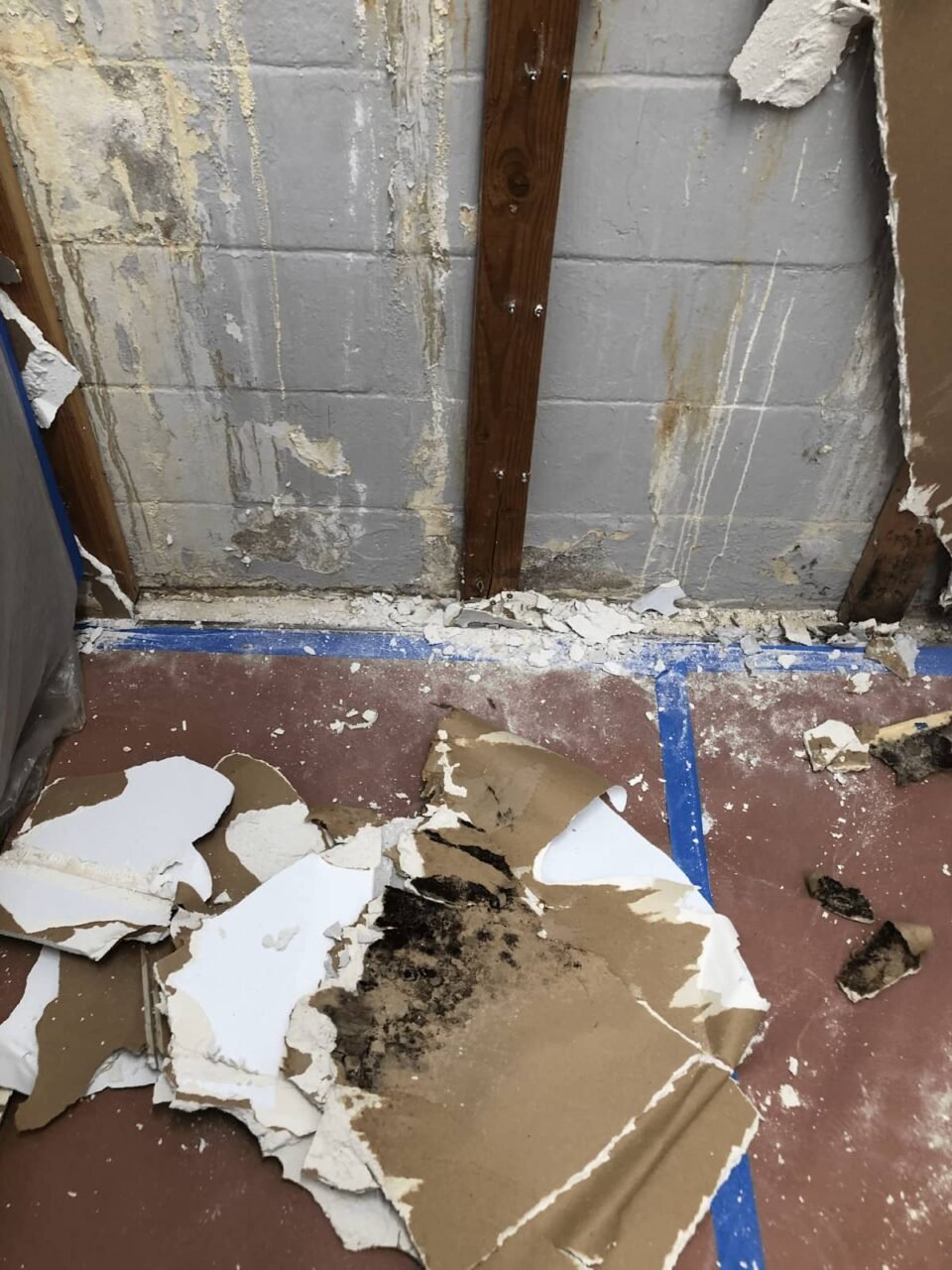Causes of mold growth
Molds are found anywhere in the environment where they break down organic material. Mold spores also get into homes via the air, which can lead to mold growth. They can grow on almost any material and within a wide temperature range – from around 0 to 50 degrees Celsius.
Molds are very undemanding; they need moisture above all. Moisture is therefore the most important factor for mold growth on walls.
Moisture in and on the wall can be caused, for example, by water damage or condensation if water vapor from the air condenses on a cold surface. This happens when the humidity is too high or the wall is too cold in relation to the air. An air humidity of around 80 percent on the surface is sufficient for condensation to form.
Moisture balance
The moisture balance within the room air is decisive for the climatic conditions in the apartment.
Moisture is produced, for example, by showering, bathing, cooking, washing dishes and drying clothes. Moisture is also released into the room air through the breath of the residents of the apartment as well as through aquariums and potted plants in the apartment.
An indication of excessive humidity is, for example, surfaces of double-glazed windows covered with condensation. The high insulating value of such glazing usually prevents the formation of condensation water in a “standard” living space climate of 20 degrees Celsius room air temperature and 50 percent relative room air humidity. Only when the air humidity exceeds the limit value relevant for condensation does condensation form on the surface of the pane on the room side.
Ventilating the rooms can reduce the humidity in the air in the room. The apartment can be ventilated via shafts and chimneys, individual room fans, kitchen exhaust air or controlled living room ventilation as well as by the residents themselves. It is only important that more moisture is removed through ventilation than is produced.
Tips for preventing mold growth
- In the cold season, the humidity in the apartment should be controlled. The relative humidity should not be higher than 55 percent.
- Commercially available hygrometers provide an orientation value. They should be read daily and regularly serviced according to the operating instructions.
- Humidity should be reduced by increased and proper ventilation. It is ideal to ventilate the room several times a day for five to ten minutes, cross ventilation, if possible, with the windows wide open.
- The resulting moisture should not get into the rest of the apartment. Ventilation is essential when showering and cooking. If exhaust air systems are available, they should be switched on.
- The soil of indoor plants should be kept as dry as possible. There should be no plants in bedrooms or damp rooms. The soil of the indoor plants must be checked regularly for mold growth.
- Condensation around the windows is a sign of excessive humidity in the room and should be wiped away regularly.
- An unimpeded release of heat from radiators into the room should be made possible. For example, there should be no furniture or curtains in front of the radiators.
- Furniture should not be placed directly against or in front of external components (walls, ceilings and floors). A distance of at least 5 centimeters must be maintained so that air can circulate. Heavy curtains or pictures should also not be hung on cold outside walls.
- Heating should be started in good time during the heating period. It is best to heat all rooms sufficiently and evenly.
Remove mold from various materials
- Inspect the mold in your apartment. Get help with the professional mold inspection service i.e. mold inspection Marina del Rey.
- As a rule, silicone joints should be carefully scratched out by a specialist company and replaced with a modified elastic sealant.
- Discard absorbent building materials such as plasterboard.
- Mold on smooth surfaces such as glass or ceramics can be removed with conventional household cleaners.
- Heavily infested textiles, mattresses or carpets should be disposed of. They usually cannot be completely cleaned.
- Curtains and blankets that have mold growth present can be washed in the washing machine using a special disinfectant detergent. However, discoloration caused by mold growth and a musty smell may not be removed.
- For example, removing moldy curtains can release a lot of mold spores. Please wear a dust mask and clean the affected room.
- Lacquered wood or plastic furniture can be wiped down with 70 to 80 percent alcohol. This should be tested on a small, non-visible spot first, as the alcohol could dissolve the paintwork or plastic. Otherwise, a household cleaner can be used.
- In the case of furniture made of natural wood (wood with open pores), a superficial infestation can be washed off with 70 to 80 percent alcohol or, if necessary, planed off. With a deeper infestation, the piece of furniture usually has to be disposed of.

